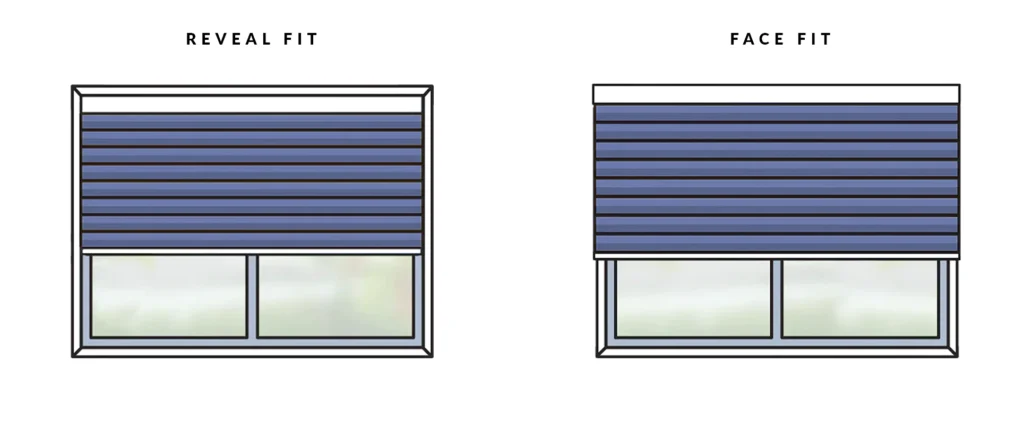
In the realm of design and architecture, the choice between face fit and reveal fit plays a pivotal role in achieving the desired aesthetic and functionality. Understanding the nuances of these two approaches is crucial for anyone involved in construction or renovation projects. So, let’s dive into the details and unravel the differences between face fit and reveal fit.
Understanding Face Fit
Face fit, in essence, refers to a design where the surface material sits flush with the surrounding framework. This sleek and seamless appearance is achieved by positioning the material directly against the supporting structure. Commonly employed in various applications, face fit is favored for its contemporary and clean look.
Applications where Face Fit Excels
Face fit finds its home in modern interiors, offering a minimalist and visually appealing finish. From kitchen cabinets to wall paneling, this method enhances the overall aesthetics of spaces where a sleek appearance is paramount.
Exploring Reveal Fit
In contrast, reveal fit involves setting the surface material back from the surrounding framework, creating a distinct recess or reveal. This design choice adds depth and dimension to surfaces, making it a preferred option for those seeking a more classic or architectural look.
Instances where Reveal Fit Shines
Reveal fit is often chosen for exterior facades and traditional interiors, contributing to a sense of depth and intricacy. It’s a popular choice in settings where the goal is to highlight architectural details and create a sense of visual interest.
Key Differences Between Face Fit and Reveal Fit
To make an informed decision, it’s crucial to delve into the specific differences between these two design approaches. Let’s break down the key distinctions in terms of design and functionality.
Design and Functionality Comparison
- Face Fit:
- Design: Sleek and seamless.
- Functionality: Modern and minimalistic.
- Reveal Fit:
- Design: Dimensional and architectural.
- Functionality: Classic and visually intriguing.
Pros and Cons
- Face Fit:
- Pros: Contemporary aesthetics, easy maintenance.
- Cons: Limited architectural depth.
- Reveal Fit:
- Pros: Architectural interest, timeless appeal.
- Cons: Requires more maintenance to prevent dust accumulation.
Choosing the Right Fit for Your Needs
The decision between face fit and reveal fit should align with the specific requirements of your project. Consider the following factors to make an informed choice:
- Overall Design Vision:
- Define the aesthetic goals of your project.
- Space Functionality:
- Consider the purpose of the space and the desired atmosphere.
- Maintenance Preferences:
- Evaluate the level of maintenance you are willing to commit to.
- Budget Constraints:
- Analyze the cost implications of each fit style.

Installation Process of Face Fit
Step-by-Step Guide
- Surface Preparation:
- Ensure a clean and level surface.
- Material Alignment:
- Align the face-fit material with precision.
- Secure in Place:
- Secure the material to the supporting structure.
Common Mistakes to Avoid
- Neglecting surface preparation.
- Inaccurate material alignment.
Installation Process of Reveal Fit
Step-by-Step Guide
- Framework Adjustment:
- Modify the framework to create a recess.
- Material Placement:
- Position the material within the recess.
- Secure in Place:
- Secure the material, ensuring a snug fit.
Tips for a Seamless Installation
- Precise framework adjustments.
- Attention to detail during material placement.
Maintenance and Cleaning
Ensuring the longevity of your chosen fit style involves adopting best practices for maintenance and cleaning.
Face Fit Maintenance
- Regular cleaning with non-abrasive solutions.
- Prompt addressing of any surface damage.
Reveal Fit Maintenance
- Periodic dusting of recessed areas.
- Inspection for any signs of wear or damage.
Cost Comparison
While face fit may offer simplicity, reveal fit may come with added costs. Consider the long-term financial implications to align with your budget.
Case Studies
Face Fit Success Story
In a modern office space, face fit cabinetry transformed the workspace, creating an environment of sophistication and efficiency.
Reveal Fit Triumph
The reveal fit facade of a historic building enhanced its architectural charm, attracting positive attention and preserving its heritage.
Trends in Face Fit and Reveal Fit
As design preferences evolve, face fit trends towards sleek and minimalistic designs, while reveal fit maintains a timeless appeal, especially in heritage restoration projects.
Environmental Impact
Consider the environmental impact of your choice. Face fit materials may have a lower environmental footprint due to their simplicity, but reveal fit components may require more intricate materials. Evaluate the sustainability aspect based on your project’s eco-conscious goals.
Customer Reviews and Satisfaction
Understanding the experiences of those who have chosen face fit or reveal fit can provide valuable insights.
Face Fit User Feedback
Users appreciate the clean lines and ease of maintenance with face fit installations. The modern aesthetic is a common highlight.
Reveal Fit User Feedback
Those opting for reveal fit often express satisfaction with the architectural depth it adds, though some note the need for consistent dusting in recessed areas.
Expert Opinions
Industry experts shed light on the nuances of face fit and reveal fit, offering recommendations based on their professional insights.
Expert Insight on Face Fit
“Face fit is an excellent choice for contemporary spaces, providing a seamless finish. Its simplicity aligns well with modern design preferences.”
Expert Insight on Reveal Fit
“Reveal fit allows for a play of light and shadow, enhancing architectural details. Its timeless appeal makes it suitable for a range of settings.”
Conclusion
In the eternal debate of face fit versus reveal fit, there is no one-size-fits-all answer. Your choice should harmonize with the specific needs and vision of your project. Whether you lean towards the modern simplicity of face fit or the timeless depth of reveal fit, make a decision informed by aesthetics, functionality, and long-term considerations.
As you embark on your design journey, remember that the beauty lies in the details, and your choice between face fit and reveal fit is a crucial detail that will shape the character of your space.
Now, armed with a comprehensive understanding of the differences, weigh your options and make a choice that resonates with your project’s essence.
Frequently Asked Questions (FAQs)
- Which fit style is more cost-effective in the long run?
- The cost-effectiveness depends on factors like maintenance and material choice. Face fit may be simpler and cheaper upfront, but reveal fit may have long-term aesthetic benefits.
- Can reveal fit be used in modern, minimalist designs?
- Yes, reveal fit can be adapted to modern designs by incorporating clean lines and subtle recesses for a touch of architectural interest.
- Is one fit style more eco-friendly than the other?
- Face fit materials tend to have a lower environmental impact, but it’s essential to assess the sustainability of specific components used in both styles.
- How challenging is the maintenance of reveal fit surfaces?
- Maintaining reveal fit involves periodic dusting of recessed areas. While not overly challenging, it requires attention to detail to keep the surfaces looking their best.
- Can face fit and reveal fit be combined in a single project?
- Yes, combining both fit styles in different areas of a project can create a dynamic and visually interesting space, showcasing the versatility of each approach.
